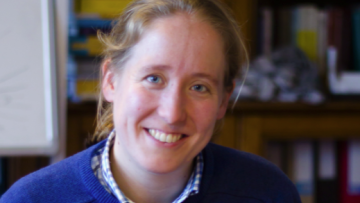As the new academic year approaches, we're adding to our catalogue of Oxford Mathematics student lectures on our YouTube Channel.
The latest is a lecture from Vicky Neale (pictured) on Monotonic Sequences, part of her first year Analysis 1 course. There are 50 more lectures for you to watch on the Channel covering many aspects of the undergraduate degree, including two full courses. We will add more over the coming weeks, including more lectures from the third and fourth years when students get to specialise.


